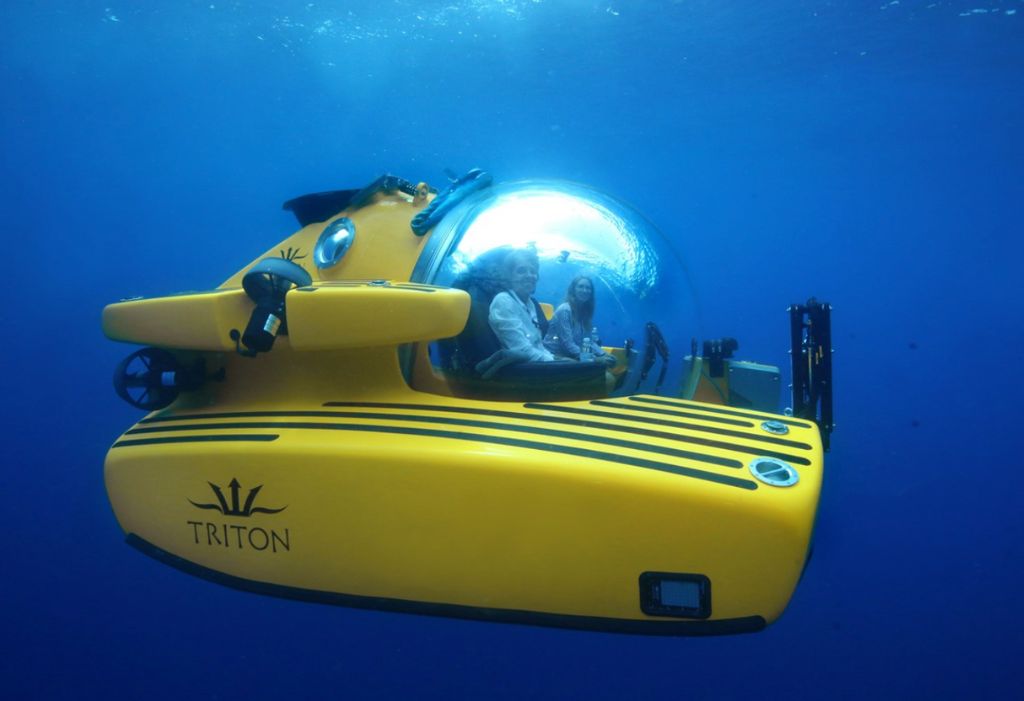Submersible Tourism: A Nightmare for Regulation, or the Catalyst for a Cleaner Ocean?
The call of the deep is an innate yearning in the human mind to explore the mysteries of the ocean and venture deeper. On June 18, 2023, five people dove to explore the legendary wreck of the Titanic on OceanGate’s Titan submersible. The Titan went missing en route to the wreck of the Titanic and the disappearance of the deep-sea submersible triggered a days-long, multinational search and hoped-to-be rescue operation. Unfortunately, all five passengers of the Titan submersible died on their voyage.
Global headlines ranged from sympathy for the families of the deceased, to casting aspersions on OceanGate and the whole endeavor. The Titan submersible incident called into question the regulations, or lack thereof, that could have prevented the loss. OceanGate has been criticized for numerous alleged failures such as the choice of material for the Titan’s hull and the steering, which was a repurposed video game controller. Despite the safety concerns and the voyage’s price tag of $250,000 per passenger, the draw of the ocean’s mysteries and the legendary canon of the Titanic was enough to entice passengers to embark on an underwater tour.
Underwater tourism is a quickly growing industry; tourism to coral reefs is estimated to contribute $36 billion dollars to the global economy annually. Most of the money comes from activities such as scuba diving, snorkeling, or glass bottom boat rides, which are accessible ways for people to enjoy the beauty of the ocean. Many believe commercial submersibles, however, are the next wave of underwater tourism. Currently, the cost of operating these submersibles is too high to be readily accessible to most consumers. There are small, three person submersibles which charge $1,500 an hour to dive beneath the waves in the Maldives. There are luxury submarine hotels that cost $150,000 a night for one to cruise around the coral reefs in St. Lucia. Despite the current high price tag, the democratization of submersibles is expected to occur in the same way air travel became more accessible; with enough demand the costs will decrease, and accessibility will increase.
With this expected increase of traffic and underwater tourism comes the question elicited by the ill-fated Titan submersible: what are the regulations now and how will this kind of travel be safe?
The Titan submersible is classified as an underwater vehicle (UV) by the United Nations Convention on the Law of the Sea (UNCLOS). Most operation of UVs is restricted to military operations across the globe. There are several UVs used for scientific research purposes, this submersible use has its own proposed regulations in the form of the Draft Convention on the Legal Status of Ocean Data Acquisition Systems, Aids, and Devices (ODAS).
There are three categories to define a seafaring vessel under UNCLOS: (1) ships and vessels, (2) equipment, and (3) devices. It is unclear however, whether recreational UVs are considered a ship or vessel, thus the ambiguity arises. Due to this ambiguity, recreational UVs are not following UNCLOS regulations. Additionally, recreational UVs are not regulated by ODAS since they are not engaged in research or scientific endeavors; as such, the Titan submersible was allowed to operate effectively unregulated.
Very few countries, however, have commercial and recreational use of UVs due to the incredibly high cost of construction, maintenance, and operation. It is likely the lack of regulations in this area is tied to the limited number of countries operating UVs outside of a military or research capacity. The notoriety of the Titan submersible has called attention to the need for increased regulation now, well before underwater tourism becomes as accessible as air travel.
One beneficial side effect of increased underwater tourism may be an increase in funding and conservation of coral reefs. No one wants to pay for an underwater tour of a dead coral reef or to see floating islands of trash. People who venture into nature often, such as hikers, fishers, surfers, scuba divers, hunters, and many others care deeply about conserving the environment. An increase in underwater tourism will lead to increased exposure to oceanic conservation issues which grants legislators more incentive to encourage safe and well-regulated underwater tourism.
As underwater tourism becomes more accessible and the use of submersibles increases, legislators must consider regulations which balance the safety of passengers, the environmental sustainability of such excursions, and the potential for economic growth.
Article Written by Jonathan Newsome
Sources:
Ulrike Lemmin-Woolfrey, How Underwater and Deep Sea Tourism became so Popular, BBC (June 20, 2023), available at https://www.bbc.com/travel/article/20230620-how-underwater-and-deep-sea-tourism-became-so-popular (last visited Aug. 27, 2024).
Rachel Treisman, A year after the Titan submersible implosion, investigators still don’t have answers, NPR (June 18, 2024), available at https://www.npr.org/2024/06/18/nx-s1-5008649/titan-submersible-implosion-anniversary-titanic (last visited Aug. 27, 2024).
Daiana Seabra Venancio, Law of the Sea and the Titan incident: The legal loophole for underwater vehicles, Blog of the European Journal of International Law (July 24, 2023), available at https://www.ejiltalk.org/law-of-the-sea-and-the-titan-incident-the-legal-loophole-for-underwater-vehicles/ (last visited Aug. 27, 2024).
Dressel Divers, Underwater Tourism: Is the Future of Travel in the Depths?, Dressel Divers, available at https://www.dresseldivers.com/blog/underwater-tourism/ (last visited Aug. 27, 2024).
Coral Reef Alliance, Coral Reefs 101: Why we care about reefs? Tourism, Coral Reef Alliance, available at https://coral.org/en/coral-reefs-101/why-care-about-reefs/tourism/ (last visited Aug. 27, 2024).

